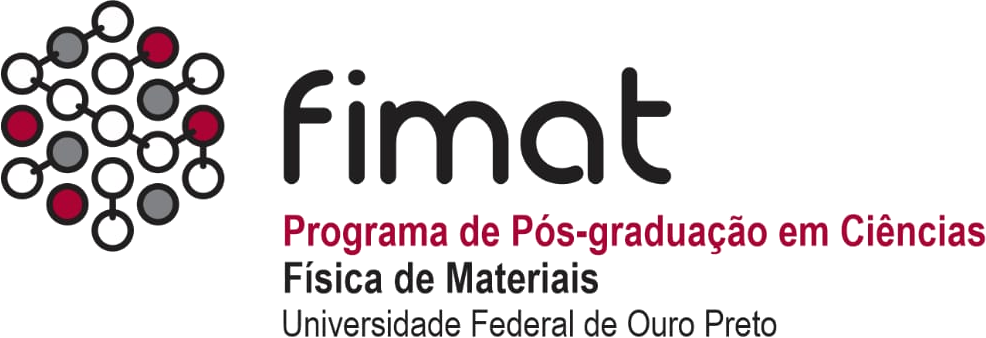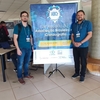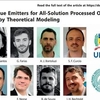Otávio David Braga and Thiago Colla. 2025. “Cavity correlations and the onset of charge ordering at charged interfaces: A modified Poisson–Fermi approach.” The Journal of Chemical Physics, 162, 3, Pp. 034110. Publisher's VersionAbstract
Charge layering in the close vicinity of charged interfaces is a well-known effect, extensively reported in both experiments and simulations of Room Temperature Ionic Liquids (RTILs) and concentrated electrolytes. The traditional Poisson–Fermi (PF) theory is able to successfully describe overcrowding effects but fails to reproduce charge ordering even in strong coupling regimes. Simple models, yet capable of investigating the interplay between these important interfacial phenomena, are still lacking. In order to bridge this gap, we herein present a modified PF approach that is able to capture layering effects in strong coupling regimes typical of RTIL. The modification is based on the introduction of charge cavities around test-particles, which simply extend the exclusion volume effects to also incorporate the accompanying depletion of charges due to particle insertion. The addition of this simple ingredient is shown to reproduce overscreening and charge ordering, thereby extending the predictive power of the PF approach to strong coupling regimes. Using a linear response theory, we were able to study the emergence of charge ordering based on two characteristic lengths: a wavelength responsible for charge layering, along with a damping length that screens charge oscillations. At large ionic strengths and strong couplings, the system undergoes a transition to undamped charge layering. The transition takes place when the poles of the Fourier components of the linear potential become real-valued. This criterion allows one to identify the transition line across the parameter space, thus delimiting the region of stability against unscreened charge ordering.




